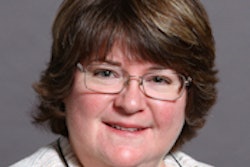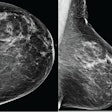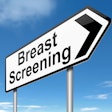Data from digital breast tomosynthesis (DBT) studies dominated the recent RSNA 2014 meeting, with a special emphasis placed on how the technology affects screening recall rates. For example, one study explored how radiologists' experience might affect recall rates with DBT, while another investigated how DBT could affect recall rates in women undergoing baseline breast cancer screening.
The effect of radiologist experience
As radiologists gain more experience in interpreting tomosynthesis exams, recall rates for architectural distortion also grow. Architectural distortion, in turn, is the mammography finding with the highest predictive value for cancer, according to a study presented by Dr. Melissa Durand of Yale University School of Medicine.
Durand and colleagues conducted a retrospective chart review of screening mammograms with DBT that had been performed between October 2011 and October 2014. The group recorded the number of screening recalls, the types of abnormalities that prompted recalls, whether a recall resulted in a cancer diagnosis, and the number of invasive and in situ cancers found. Seven radiologists with experience ranging from three to 23 years participated in the study, Durand told session attendees.
"We found that overall recall rates fluctuated slightly but remained significantly lower than pretomosynthesis recall rates," Durand told AuntMinnie.com.
Within the study time frame, 12,406 screening mammograms with DBT were performed, and 1,027 women were recalled. The overall recall rate was 8.3%.
"This was lower than our recall rate prior to using tomosynthesis," she said.
When Durand's group broke the recall rates down by year, they came up with a rate of 8.2% in year 1, 9.2% in year 2, and 7.4% in year 3. But these fluctuations were not statistically significant.
In addition, over the three years, recall rates for masses and calcifications did not change on a statistically significant basis. However, the recall rate for architectural distortion did show a statistically significant increase, particularly from the beginning of year 1 to the end of year 2, Durand said. At the beginning of year 1, the recall rate for architectural distortion was 0.26%; by the end of year 2, it was 1% (p = 0.0027). Between years 2 and 3, the rate dipped to 0.58%, which was not statistically significant compared to the beginning of year 1 (p = 0.148).
"We found that recalls for architectural distortion at screening mammography with tomosynthesis -- the abnormality that yields the highest proportion of cancer diagnoses -- significantly increased with radiologist experience," she concluded.
Tomo's effect on baseline screening recall rates
In another presentation given during the same RSNA session, Dr. Jules Sumkin, from the University of Pittsburgh Medical Center, and colleagues reported that tomosynthesis reduced recall rates in women undergoing baseline breast cancer screening exams.
Sumkin's team included 1,080 women between the ages of 34 and 56 who had a baseline mammogram between January 2013 and September 2014. The women underwent both full-field digital mammography (FFDM) alone and FFDM plus DBT. Each case was independently reviewed and reported by two radiologists out of a total group of 10.
"Recall rates during baseline examinations are high, so women in this group stand to benefit the most in terms of a reduction in recall rate with the use of tomosynthesis," Sumkin said.
The recall rate for digital mammography alone across all BI-RADS categories was 37%, while the recall rate for FFDM plus DBT was 27%, Sumkin said. There was a wide range in recall rates among the participating radiologists (21% to 51%), as well as a wide range in the reduction of recall rates (2% to 60%).
But the recall rates for BI-RADS 0 -- which prompts a woman to be recalled for more imaging -- decreased dramatically, from 25.4% with mammography alone to 15.8% with mammography plus tomosynthesis.
What do the findings suggest? Recall rates for the clinical situation of baseline breast cancer screening require particular attention, according to Sumkin.
"We believe high recall rate in women undergoing baseline screening is a serious problem because a small subset of women disproportionately contributes to it," he said.




















